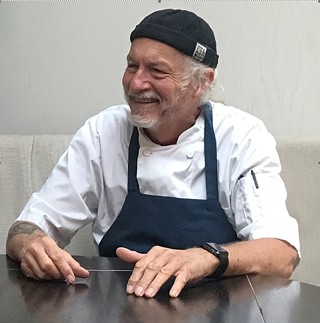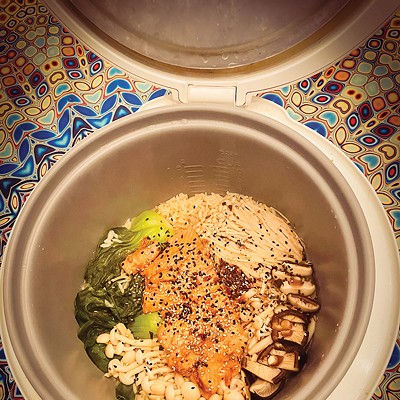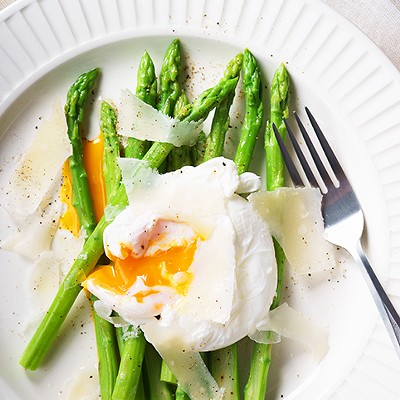When big box stores started putting local mom-and-pop shops out of business, our communities lost many experts and artisans. As local hardware stores, grocers and bakeries closed, we no longer had access to their knowledge and information. In the last decade, there has been a resurgence of locally owned artisanal businesses, including, thankfully, butcher shops. Three of my favorites are Nashville's Porter Road, which opened in 2010, Chicago's Publican Quality Meats, which opened in 2012, and Bolyard's Meat and Provisions in the St. Louis suburb of Maplewood, which opened in 2014. These businesses were started by chefs who realized that their communities needed a butcher shop that offered high-quality meat and poultry that was humanely raised, and staffed by knowledgeable butchers and chefs who could educate their customers on the best cooking techniques. These artisanal butchers practice whole-animal butchery and obtain their animals from small farms with shared values. St. Louis's Chris Bolyard even visits each farm's processing plant to make sure the animals are safe and comfortable before slaughter. Animals give their lives to feed us, he says. We should respect that by giving them the best quality of life possible.
What these butchers do, and most supermarkets don't do, is practice seam butchery. As the name suggests, this style of butchering is defined by the fact that butchers carefully cut along the natural seams between muscles, a practice that is time-consuming and requires skilled knifework. This approach to butchery is what you'll find in Europe. The typical American approach is to slice through whole clusters of muscles with a band saw, which results in a hodgepodge of different muscles and a lot of gristle. That way is faster but leaves behind a considerable amount of trim after creating the high-priced ribeyes and T-bones. But all the trim will be ground into hamburger anyway. A slab of steak cut with a bandsaw will contain cross-sections of multiple muscles with differing optimum cooking requirements, whereas seam-butchered steaks are homogenous and will cook more uniformly. Seam-butchery isolates the individual muscles and produces lesser-known and underappreciated cuts such as teres major, bavette, flatiron and hanger steak, each with its own flavor and texture.
Seam-butchered cuts are typically less expensive than more well-known steaks and are often more flavorful. Until recently, you rarely saw these cuts show up on the meat counter. These muscles tend to be smaller, some as small as a half-pound per cow, and were often taken home by the butcher for personal consumption. I am not a vegetarian, but I've made the shift from eating a big steak with a small side of vegetables, to a large serving of vegetables with a small piece of meat. The following steaks tend to be just the right amount for my wife and me to share.
Teres major
You probably won't find this cut at your local supermarket because retrieving it takes a great deal of skill and extra time. The teres major is cut from a seldom-used muscle in the shoulder and is the second-most-tender cut of beef, after the tenderloin. It is sometimes referred to as the petit tender. Each cow only has 1-1.5 pounds of this cut. The teres major is incredibly lean and benefits from added fat, such as a bacon wrap, or basting with a compound butter.
The teres major can be pan-seared or grilled. Avoid overcooking: rare to medium-rare is best. I like to sear it in a hot cast-iron skillet with 2 tablespoons of butter, a smashed garlic clove and some fresh rosemary. Sear the steak for 2 to 3 minutes per side, spooning over the butter. When it reaches 125° F, remove it and rest it for 5 minutes. Slice into thin strips against the grain.
Flatiron steak
The flatiron has an interesting history. In 1998, meat scientists at the University of Florida and University of Nebraska received a $1.5 million grant from the National Cattlemen's Beef Association to find new ways to increase the value of a cow. They searched through 39 different sets of muscles from 144 beef carcasses to find what had the best flavor and tenderness. They found a muscle in the shoulder blade that was usually ground up for hamburger because of a tough tendon that ran through it. They named it the flatiron because its shape resembled an old-fashioned clothes iron.
The flatiron is very tender and has much more flavor than the higher-priced tenderloin. It is great for grilling or pan searing. Cook it over medium heat for about eight minutes, then flip and cook for another seven. Due to its thin, flat shape, it should not be cooked beyond medium-rare; cooking it to medium makes it like shoe-leather.
Bavette
Bavette is a favorite among butchers for its beefy, juicy and slightly sweet complex flavor. It has often been called the butcher's cut because butchers reserved it for their own pleasure. It is a loose-textured, beautifully marbled cut that comes from the bottom part of the sirloin butt. It's not a muscle that does too much work, so it's tender. In the U.S., it is often sliced up and sold as sirloin tips.
When cooked on a stovetop, it is best cooked over high heat to the rare side of medium rare, about two or three minutes per side and given a nice long rest. On a grill, cook over direct heat from a medium-hot fire for about three minutes a side. If you cook at too low a temperature, moisture will escape, and the steak will stew and toughen. Season the bavette after cooking, while it's resting.
The bavette should be cut into ¾-inch slices across the grain, just before serving. Identify the direction the muscle fibers are aligned and slice across the grain rather than parallel with it. This will make it easier to chew.
Hanger steak
The hanger steak is also known as the hanging tender because it hangs beneath the cow's diaphragm, near the flank. It is sometimes called by its French name, onglet. There is only one hanger steak per cow. Its shape resembles a short baguette and has a coarse grain. This cut is basically two muscles separated by a layer of connective tissue or silver skin, which needs to be trimmed away, along with some of the fat and sinew. (Do not discard the trimmings. They contain a lot of flavor. Instead, you can caramelize the trim with celery, carrot, onion and garlic tomato paste, and then deglaze with red wine to make a pan sauce.)
The hanger benefits from time in a marinade and takes well to high heat. It should be cooked to medium-rare. I like to sear it 2-3 minutes per side over high direct heat, and then about 8 minutes over medium, indirect heat. After resting, it should be sliced into small strips against the grain.
Locally, you can source flatiron and hanger steaks from Triple S Farms (www.triplesfarms.com). You can find all four steaks online from Porter Road (www.porterroad.com).



















